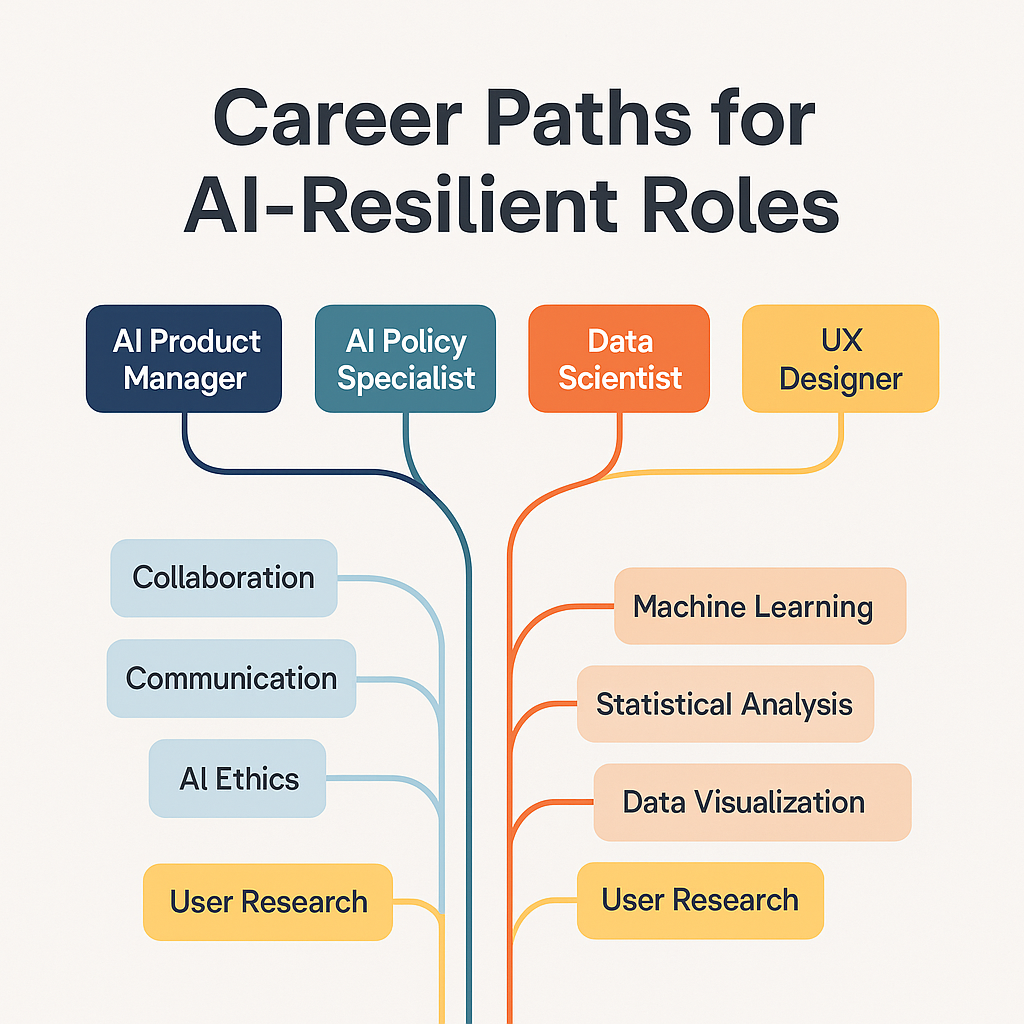Explore how AI is reshaping the job market in 2025. Learn which jobs are most at risk, what new roles are emerging, and how to prepare for the future workforce.
AI and Jobs: What Will Be Replaced vs. What Will Be Created
Understanding the Workforce Impact of Artificial Intelligence in 2025
As AI becomes deeply embedded in every sector of the economy, concerns around automation and job displacement continue to grow. But the truth is more nuanced than a simple story of job loss. AI is not only replacing tasks — it’s also creating entirely new roles and industries.
In this article, we examine:
- The types of jobs most at risk from AI
- The new roles AI is enabling
- How workers and businesses can prepare
- Key frameworks and economic models for understanding this shift

🤖 Which Jobs Are Most at Risk?
AI doesn’t eliminate entire professions overnight — it automates tasks, particularly those that are repetitive, data-driven, and rules-based. Jobs with high task automation potential are the most exposed.
🧾 Jobs Likely to Be Replaced or Transformed:
| Sector | Role Examples | Reason for Risk |
|---|---|---|
| Administrative | Data entry clerks, schedulers | RPA (Robotic Process Automation), NLP |
| Customer Service | Call center agents, tech support | Conversational AI, chatbots |
| Retail | Cashiers, stock clerks | Self-checkout, smart inventory |
| Manufacturing | Assembly line workers | Robotics, machine vision |
| Transportation | Delivery drivers, long-haul truckers | Autonomous vehicles, route AI |
| Accounting | Bookkeepers, auditors | Automated reconciliation, AI auditors |
⚠️ Technical Note: GPT-style language models, combined with Robotic Process Automation (RPA) and Computer Vision, are driving task-level automation—not full job elimination in most cases.
🧠 What Jobs Will Be Created by AI?
AI is not just replacing labor—it’s also augmenting human capabilities and enabling new job categories that didn’t exist a decade ago.
🆕 Emerging and Growing Roles:
| Role | Skill Area | AI Dependency |
|---|---|---|
| AI/ML Engineers | Deep learning, model ops | Building & tuning AI models |
| Prompt Engineers | NLP, creative language control | Optimizing language model outputs |
| Data Annotators & Curators | Labeling, data QA | Supervised learning requirements |
| AI Policy & Ethics Experts | Governance, compliance | Regulating model behavior |
| AI Product Managers | Systems design, deployment ops | Delivering AI-powered features |
| Human-AI Interaction Designers | UX, cognition, psychology | Designing interfaces for AI agents |
| AI Content Creators | Video/image/text generation | Using tools like DALL·E, Sora, GPT-4o |
📊 Example: According to a 2024 WEF report, 85 million jobs may be displaced by automation by 2025—but 97 million new jobs are expected to be created in parallel.
🧩 Hybrid Roles: Augmented, Not Automated
Most jobs will not be replaced — they will be reshaped. AI acts as a co-pilot, taking over routine work while amplifying human decision-making.
Examples:
- Lawyers: Use AI for contract review, case research (but still argue in court).
- Doctors: Use AI for diagnostics and triage, but retain judgment and patient care.
- Teachers: Use AI to personalize lesson plans, not replace classroom engagement.
- Journalists: Use AI for summaries, leads, and data analysis, but preserve editorial voice.
🧠 Think of AI as a force multiplier, not a substitute.
⚙️ Economic Models of Job Disruption
- Task-Based Modeling: Focuses on the portion of tasks within a job that can be automated (e.g., Frey & Osborne’s model).
- Complementarity Theory: Jobs survive when they are complemented—not substituted—by AI.
- Skill-Biased Technological Change: AI shifts demand toward more cognitive, creative, and social tasks.
📘 Harvard’s 2023 research showed that occupations combining technical and interpersonal skills have grown fastest in the post-AI decade.
📚 Preparing for the Future: Skills and Strategy
🔧 In-Demand Skills (2025+):
| Technical Skills | Human Skills |
|---|---|
| Data literacy | Critical thinking |
| Prompt engineering | Emotional intelligence |
| Low-code platforms | Creativity & adaptability |
| AI/ML model tuning | Leadership & storytelling |
📈 Strategic Actions:
- Upskill or reskill through bootcamps, MOOCs, and employer training
- Redesign jobs to emphasize human-AI collaboration
- Use AI to train with AI (e.g., adaptive learning tools)
- Advocate for inclusive AI policies at your workplace
🌍 Policy Implications and Societal Impact
To ensure a just AI transition, governments and institutions must act proactively.
Key Recommendations:
- Universal access to AI education
- Wage subsidies for displaced workers
- Transparency mandates for AI-based decisions
- Job transition programs for automation-vulnerable sectors
- Support for gig and creator economy AI-based work
Final Thoughts
AI is neither a job killer nor a savior—it is a powerful transformation engine. The question is not “Will AI take my job?” but rather “How will AI change my job, and how can I stay ahead?”
As AI advances, the most resilient workers will be those who combine technical fluency with human strengths—curiosity, empathy, and ethics.